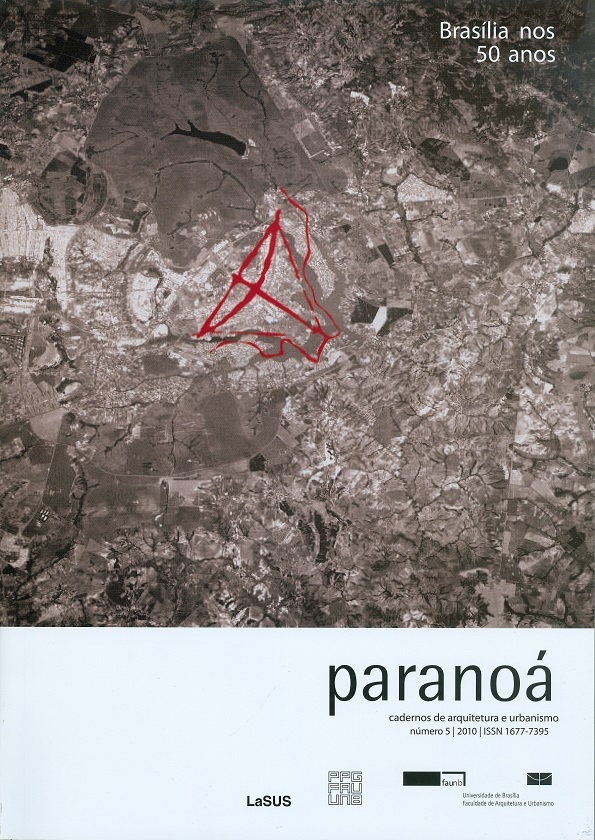Correlação entre o microclima e a configuração do espaço residencial de Brasília
DOI:
https://doi.org/10.18830/issn.1679-0944.n5.2010.15488Keywords:
Urban geometry, Microclimate, BrasiliaAbstract
On the 20th anniversary of the choice of Brasilia as a World Heritage city, we must be alert to the possible deterioration of the comfort and sustai-nability of the superblocks created in the original Architectonic Project in 1956. From the point of view of sustainability, we have analysed (within the CNPWFAUIUNB Project "Sustainable Urba-nism for the rehabilitation of degraded areas") 42 superblocks (22 in the Northern and 20 in the Southern Wing) of the 120 in all. From the exa-mination of the performance of the urban struc-tures and the relation between the urban space characteristics and the microclimate, especially that between W/H and the urban canyons, we detect, from measurements and simulations, the formation of heat islands in the residential space. The buildings constructed after the 1990s alter the local microclimate. Wider buildings, violation of the ground floor pillar system, the presence of closed apartments and balconies, the lack of brises-soleils, and ornamental trees which do not furnish shade, all of which are elements per-mitted by law, interfere with wind circulation and increase air temperature.
Downloads
Downloads
How to Cite
Issue
Section
License
Autores que publicam nesta revista concordam com os seguintes termos:
- Autores mantém os direitos autorais e concedem à revista o direito de primeira publicação, com o trabalho simultaneamente licenciado sob a Licença Creative Commons Attribution que permite o compartilhamento do trabalho com reconhecimento da autoria e publicação inicial nesta revista. http://creativecommons.org/licenses/by/4.0
- Autores têm autorização para assumir contratos adicionais separadamente, para distribuição não-exclusiva da versão do trabalho publicada nesta revista (ex.: publicar em repositório institucional ou como capítulo de livro), com reconhecimento de autoria e publicação inicial nesta revista.
- Autores têm permissão e são estimulados a publicar e distribuir seu trabalho online (ex.: em repositórios institucionais ou na sua página pessoal) a qualquer ponto antes ou durante o processo editorial, já que isso pode gerar alterações produtivas, bem como aumentar o impacto e a citação do trabalho publicado (Veja O Efeito do Acesso Livre).















